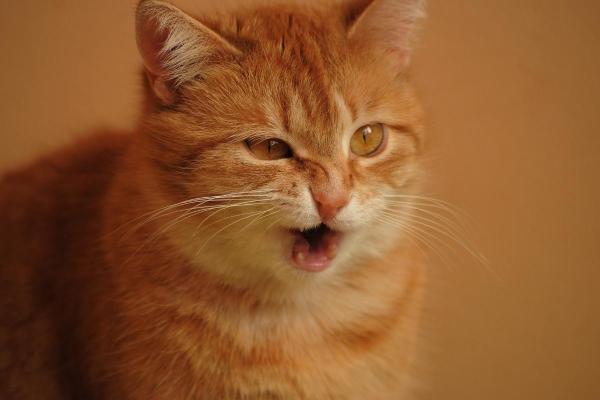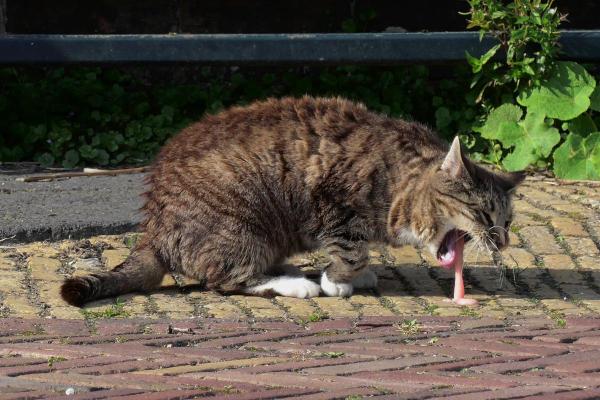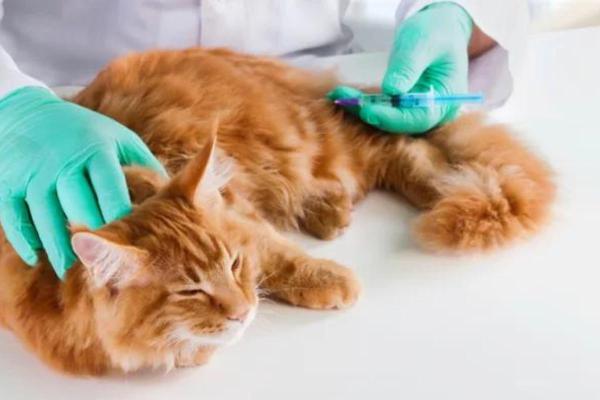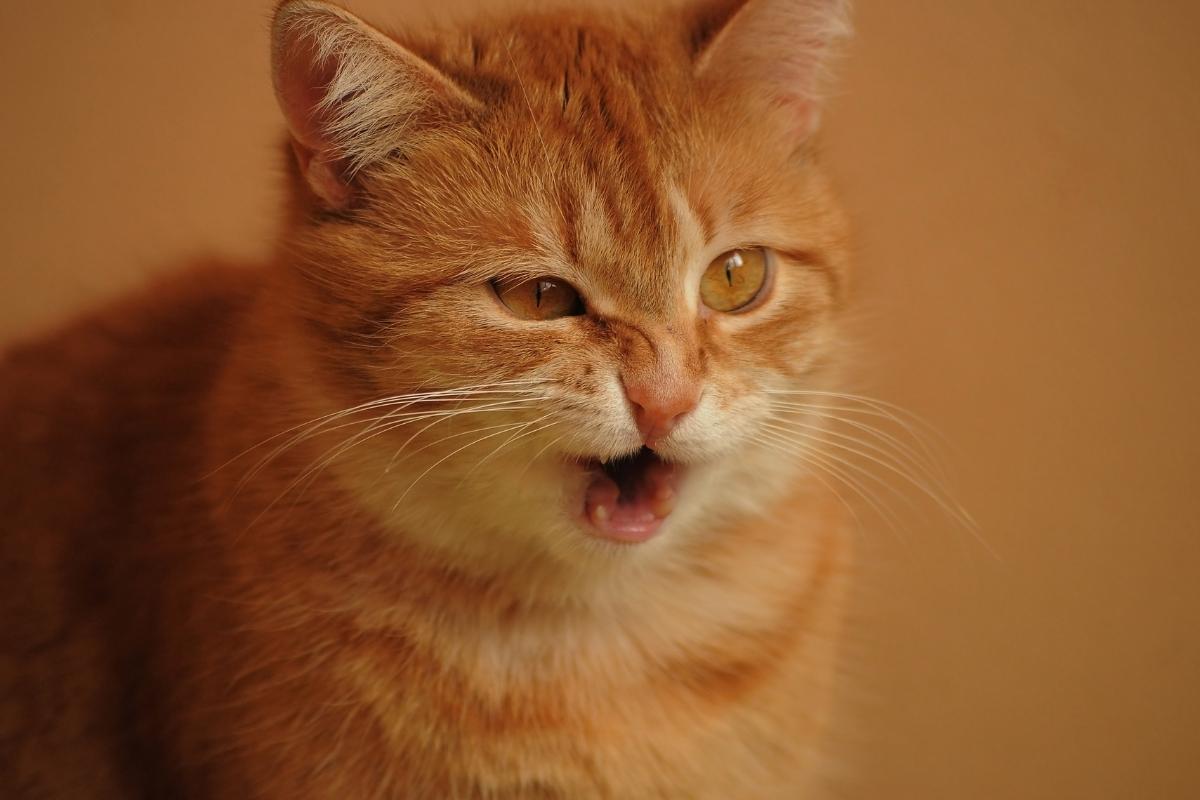Dyspnea in Cats - Difficult Breathing



See files for Cats
Dyspnea in cats is a shortness of breath that is bothersome and distressing, with varying degrees of obstruction depending on the cause. Cats may present with this breathing pattern due to a variety of causes, accompanied by more or less accompanying symptoms depending on the cause. Diagnosis of the specific cause is critical to the best management of a dyspneic cat.
The following AnimalWised article explains what dyspnea in cats is, the symptoms and treatment, and what you should do if your cat is having trouble breathing.
What is dyspnea in cats?
Breathing is the basic organic function of all living things, from the simplest unicellular microorganism to the most highly developed multicellular animal. In cats and mammals in general, normal cellular function requires a continuous supply of oxygen and excretion of carbon dioxide.
These requirements are met by respiration, which is defined as a series of processes that allow the transport of oxygen from the environment into each cell and of carbon dioxide in the opposite direction.
Dyspnea is a general term for shortness of breath. It is characterized by a labored, difficult, and usually painful breathing pattern that is noticeable by the respiratory rate increasing above 50 breaths per minute. In addition, cats appear anxious and have an open mouth. Unlike other animals, our cats do not breathe through their mouths unless their nose is blocked by a virus or disease that affects the upper respiratory tract. So, if you notice that your cat is breathing with its mouth open, you should see a veterinarian.
Symptoms of dyspnea in cats
Dyspnea is a subjective experience of shortness of breath, consisting of qualitatively different sensations that vary in intensity. In general, cats with dyspnea show signs of restlessness, pain, and labored breathing. However, in some cases, they may also show other clinical signs such as:
- Anorexia or loss of appetite
- Pale or cyanotic mucous membranes
- Pain on palpation of the chest cavity
- Breath sounds (whistling, crackling, snoring, or throat clearing)
- Vomiting
- Fever
- Anxiousness
- Irritability
- Nervousness
- Restlessness
- Coughing
- Persistent sneezing
- Nasal discharge
- Constant panting
- Impaired heart rate
- Hypertension or hypotension
- Cardiac arrhythmias
- Increase in red blood cell count
- Confusion
- Stupor
- Seizures
- Shock
A cat might also extend its neck to facilitate airflow in some cases, depending on the intensity.
You may also be interested in this other article, where we explain in more detail why your cat wheezes when breathing.

Causes of dyspnea in cats
There are many causes of labored breathing in cats, and some even lead to death if left untreated. Causes include asthma, cancerous tumors in the lungs or other organs (such as the kidneys), and cardiovascular disease.
However, the most common cause is allergies. This occurs when the cat's hypersensitive immune system reacts strongly to foreign bodies such as pollen particles released by plants like grasses or trees during the pollination season.
Let us take a closer look at some of the other most common causes of dyspnea in cats:
- Heart diseases: one of the most common causes of dyspnea in cats is heart disease. More specifically, congestive heart failure. This occurs when oxygenated blood cannot be transported to the body and a pleural effusion develops. Pleural effusion occurs when fluid builds up in the membranes covering the lungs, making it difficult for the lungs to expand. In this article, you will learn more about pleural effusion in cats: Causes, Symptoms and Treatment.
- Respiratory problems: diseases such as bronchopneumonia or pulmonary edema also affect the proper gas exchange and expansion of the lungs, causing our cat to have difficulty breathing. These conditions are often associated with abnormal lung sounds such as crackling or wheezing. You may be interested in the following AnimalWised article on respiratory diseases in cats.
- Viruses: cats are sensitive to certain viruses that cause upper respiratory symptoms, such as Feline Herpesvirus or Feline Calicivirus. These viruses can cause your cat to build up mucus and clog their airways, making it difficult for them to breathe, in addition to many other clinical signs due to these infectious diseases.
As you can see, there are so many possible reasons why a cat may show respiratory distress that only a veterinarian can make the correct diagnosis. Some other less common causes of respiratory distress in cats are:
- Asthma
- Anxiety
- Stress
- Obesity
- Dehydration
- Fever
- Shock
- Pain
- Ingestion of poison
- Hyperthyroidism
- Pulmonary edema
- Twisted lung
- Lung worm
Sometimes the reason can be a lack of oxygen in the environment. For example, when cats are confined for long periods of time in a small room without ventilation, or during heat waves that make the environment very hot and humid, etc.
Continue reading in this other article, where we talk about the most common causes of heart failure in cats.
Diagnosis of dyspnea in cats
Cats with dyspnea are easily diagnosed by their marked respiratory effort, which can be observed by the naked eye. However, to determine the cause of dyspnea in cats, the veterinarian must perform several diagnostic tests.
Most likely, the first thing your veterinarian will do is ask you questions about when the breathing problems started, what symptoms you observed, and what preceded the shortness of breath. Then, your cat's general health will be determined by a general physical examination.
This will include a blood analysis and biochemical test to assess overall health and test the oxygen and carbon dioxide levels in your cat's blood.
In some cases, the veterinarian may perform an urinalysis and imaging studies, especially a chest x-ray, to evaluate the condition of the chest cavity and rule out a lung problem, diaphragmatic hernia, or suspected heart problems.
Sometimes an ultrasound of the chest is needed to better evaluate the structures, especially the heart, along with an electrocardiogram. A pleural puncture to examine the fluid in the pleural space, a tracheal lavage or endoscopy to obtain samples for cytology, culture or biopsy, and laboratory tests for feline viruses that may be at work may also be required.
Treatment of dyspnea in cats
The treatment of dyspnea in cats depends on the cause, because it is not the same whether the shortness of breath is due to a viral infection, a tumor or a hernia.
- Symptomatic treatment: it is usually useful in all cases, with oxygen therapy and administration of fluids or medications to stabilize the cat, especially in diseases that cause severe dyspnea or decompensation of the small cat, and always in infectious diseases.
- Specific treatment: in this case, the treatment depends on the cause of dyspnea. Dyspnea can be treated using inhalers or bronchodilators in feline asthma, chemotherapy or surgically removing tumors, eliminating fluid in pleural effusions, treating cardiac diseases, etc.
If you want to know more about rapid breathing in cats, continue reading this other article where we explore all the possible causes as well as diagnosis and treatment.

This article is purely informative. AnimalWised does not have the authority to prescribe any veterinary treatment or create a diagnosis. We invite you to take your pet to the veterinarian if they are suffering from any condition or pain.
If you want to read similar articles to Dyspnea in Cats - Difficult Breathing, we recommend you visit our Breathing diseases category.
- Harvey, A., Tasker, S. (Eds). (2014). Manual of Feline Medicine. Ed. Sastre Molina, SL L´Hospitalet de Llobregat, Barcelona, Spain.
- Aybar, V., Casamián, D., Cerón, JJ, Clemente, F., Fatjó, J., Lloret, A., Luján, A., Novellas, R., Pérez, D., Silva, S., Smith , K., Tegles, F., Vega, J., Zanna, G. (2018). Clinical Manual of Feline Medicine. Ed.SM Publishing LTD. Sheffield,UK.







